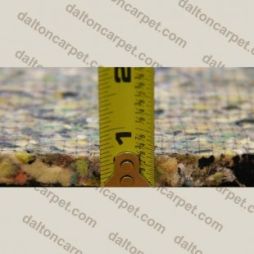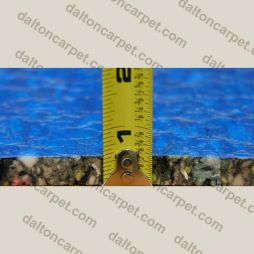Pastor Dave in Pennsylvania
Read more
SPRING SPECIAL 3 FREE SAMPLES, AT CHECKOUT USE CODE: 3FREE
Pad
Carpet Cushion...Create a Softer Walk, Add Life to Your Carpet
A firm and resilient carpet cushion, or carpet pad, is necessary to form a good foundation for your carpet, increasing its comfort and extending its life, by absorbing the impact of foot traffic. Every step you take creates hundreds of pounds of pressure per square inch in your floor covering. Carpet cushion helps alleviate that pressure. The decrease in pressure helps make your carpet feel richer, thicker, and softer.
A quality pad also adds these features…
~ Adds insulation
~ Decreases pile crushing
~ Increases carpet life as much as 50%
~ Reduces noise
Types of carpet cushion may be various polyurethane foams, (including the very common bonded foam product often referred to as rebond) fiber, or rubber. The type and thickness of carpet cushion you need varies according to traffic levels and patterns.
Carpet cushion should also be selected according to the carpet manufacturer's requirements for thickness and density. Improper selection of carpet cushion can accelerate loss of carpet surface appearance, cause wrinkling and buckling, cause separation of the carpet seams, and can cause a breakdown of the carpet structure itself. Improper carpet cushion selection also may void applicable carpet manufacturer's warranties.
For most residential carpet applications, choose carpet cushion not more than 7/16" thick. Berber carpet is made with large, wide loops and it has been found that a stable, low-flexing carpet cushion foundation is necessary. A thicker, softer carpet cushion is not acceptable for this type of application. Carpet cushion thickness should not exceed 3/8" for these type products.
Types of carpet cushion may be various polyurethane foams, (including the very common bonded foam product often referred to as rebond) fiber, or rubber. The type and thickness of carpet cushion you need varies according to traffic levels and patterns.
Carpet cushion should also be selected according to the carpet manufacturer's requirements for thickness and density. Improper selection of carpet cushion can accelerate loss of carpet surface appearance, cause wrinkling and buckling, cause separation of the carpet seams, and can cause a breakdown of the carpet structure itself. Improper carpet cushion selection also may void applicable carpet manufacturer's warranties.
For most residential carpet applications, choose carpet cushion not more than 7/16" thick. Berber carpet is made with large, wide loops and it has been found that a stable, low-flexing carpet cushion foundation is necessary. A thicker, softer carpet cushion is not acceptable for this type of application. Carpet cushion thickness should not exceed 3/8" for these type products.
We also carry pad for every one of our carpets. Be sure and ask which cushion is recommended for your application! Shop pad products below...
-
 3433 1/2” Walk Easy BlueOur one of a kind memory foam cushion offers superior comfort and pres...
3433 1/2” Walk Easy BlueOur one of a kind memory foam cushion offers superior comfort and pres... -
 3290 Pad 7/16 8lb StepUp SupremeOne of our top sellers! When you need a great performing p...$0.42 sq. ft. ($3.78 sq. yd.)
3290 Pad 7/16 8lb StepUp SupremeOne of our top sellers! When you need a great performing p...$0.42 sq. ft. ($3.78 sq. yd.) -
 2305 Pad 7/16 8lb Supreme Odor/Spill GuardThe main purpose of a carpet pad is to protect your carpet. The pad ke...
2305 Pad 7/16 8lb Supreme Odor/Spill GuardThe main purpose of a carpet pad is to protect your carpet. The pad ke... -
 2214 Pad 7/16 6lb Closeout DurabondWhile supplies last you can purchase this cushion at the promotional p...$0.33 sq. ft. ($2.97 sq. yd.)
2214 Pad 7/16 6lb Closeout DurabondWhile supplies last you can purchase this cushion at the promotional p...$0.33 sq. ft. ($2.97 sq. yd.) -
 1868 Pad 7/16 9.3lb Supreme Plus Odor/Spill Guard Anti-MicrobialThe main purpose of a carpet pad is to protect your carpet. The pad ke...
1868 Pad 7/16 9.3lb Supreme Plus Odor/Spill Guard Anti-MicrobialThe main purpose of a carpet pad is to protect your carpet. The pad ke... -
 206 Pad 7/16 6lb StepUp Premium DurabondThe main purpose of a carpet pad is to protect your carpet. The pad ke...
206 Pad 7/16 6lb StepUp Premium DurabondThe main purpose of a carpet pad is to protect your carpet. The pad ke...